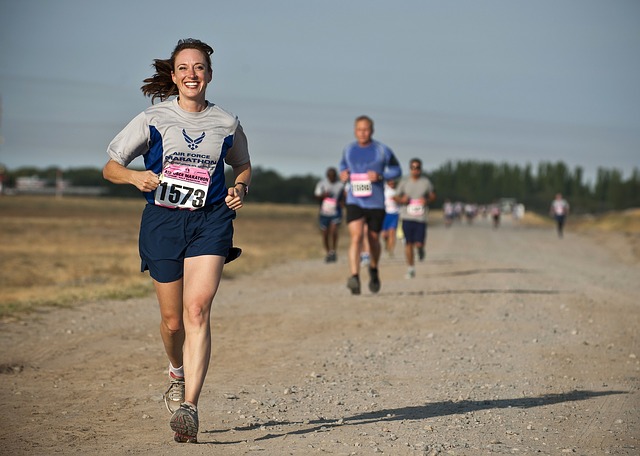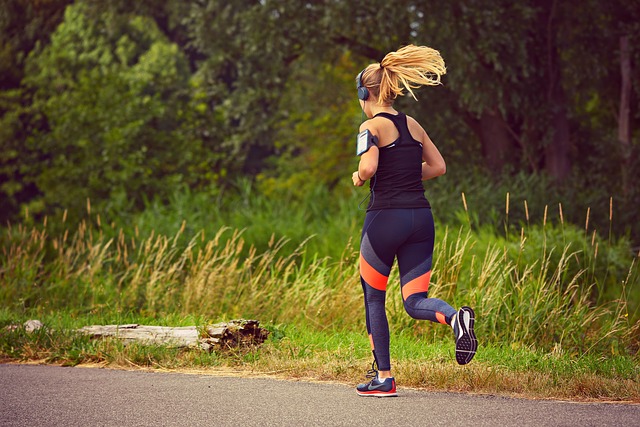The Correct Technique for Breathing During Running
Whether you are a beginner or an advanced runner, controlling your breathing is an important part of training. Many new runners experience frustration when it comes to understanding how proper breathing technique plays a role in their run and how to improve their breathing technique.
As you advance as a runner, it is important to ensure your breathing technique is still on spot with your pace. The following are examples of rhythmic breathing technique and the benefits it can offer you as you train. Furthermore, rhythmic breathing and belly breathing will help you increase the amount of oxygen you take in while reducing the chances of getting a side stitch.
Rhythmic Breathing
Rhythmic breathing is a good way to help keep injuries away. Studies have shown that when you hit the ground with a certain foot on exhalation every time you strike, that leg is more prone to injury. When you exhale, the diaphragm relaxes and so do the muscles in your core. If your core is not stabilized, you are also more prone to injuries.
For example, if you always land on your right foot during exhalation, you will be more likely to experience injuries on your right side. Rhythmic breathing helps combat this by coordinating your footstrike with an odd and even pattern so your body absorbs the shock on each side equally.
Benefits
Rhythmic breathing helps center yourself and gets your body more focused for more control. The breathing technique also helps keep your body relaxed, which equals less stress. Imagine a run where your cadence is smooth, your breathing is rhythmic, and your body is in tune with the run.
Breathing While Running
Most runners develop a breathing pattern that is 3:3 or 2:2, which means the exhale is always on the same side. For example, a 3:3 pattern would be inhale for three footstrikes then exhale for three footstrikes.
A rhythmic pattern can is 3:2 pattern where you inhale for three steps and exhale for two steps. The easiest way is to practice on the floor first.
- Lay on your back with your feet on the floor and knees bent
- Make sure you are belly breathing
- Inhale to a count of 3
- Exhale to a count of 2
- After you are comfortable with this, start tapping your feet.
Practice this until you feel comfortable and then go for a walk. Keep practicing your rhythmic breathing. It will get easier as you go on. Once you have it down while walking, practice while running.
Nose Versus Mouth Breathing

Which one should you do? Nose breathing can tighten your facial muscles and jaw which gets uncomfortable after a while. Tension is never good while running, so you want to keep your face more relaxed, which is easier done through mouth breathing.
While mouth breathing is good, you need to ensure you are stomach breathing, or belly breathing as well. If you are primarily using your chest to breath, you will get shallow breaths and not enough oxygen into your lungs. On the other hand, using your diaphragm to breathe forces more air into your lungs, allowing the maximum of oxygen in.
Benefits to Fixing Your Breathing
Now that you know how to fix your breathing and how it can help you, just what should you look for? Breathing rhythms can help you identify your pace, especially when it comes to tempo intervals or tempo runs. Watch whether you breathe faster or slower and if you happen to slow down at certain points. If you have a hard time maintaining pace, watching your breathing can help.
Controlled deep breathing can help prevent those dreaded side stitches. The side stitches are usually caused by stress on the diaphragm, which consistent deep breathing can help alleviate.
The Importance of Breathing
The way you breathe while running can make your overall run more comfortable and reduce stress on your body. You can practice belly breathing in your spare time to get in the habit so you naturally do it while you run. Practice rhythmic breathing and over time that will come naturally as well. If you are a beginner and don’t know where to start, check out this guide to help you get started.




